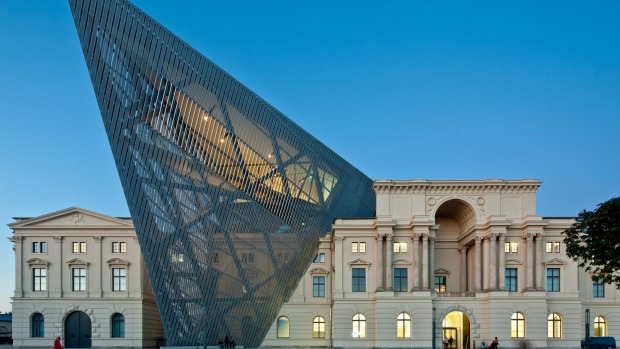
The voice in the distance is faintly angelic, the violin chords exquisite. The rendition of Walking in the Air, the song from the animated movie The Snowman, grows louder as I cross a wooden bridge, veer past a lake and duck through a forest opening. There, by the muddy waterfront, five children, aged between about 8 and 13, are performing before a small crowd of spectators and their shaggy-haired conductor.
As the wunderkids move through their melodic repertoire, I wish, not for the first time today, that I was carrying my Dictaphone, an iPhone, any recording device, in fact.
A tapestry of music – from virtuoso violinists, cellists and accordionists, to army brass bands, and even a little boy playing the bongos – has provided a stirring backdrop to my wanderings around Dresden, a city bristling with culture and good looks, and one with a history that's both tragic and uplifting.
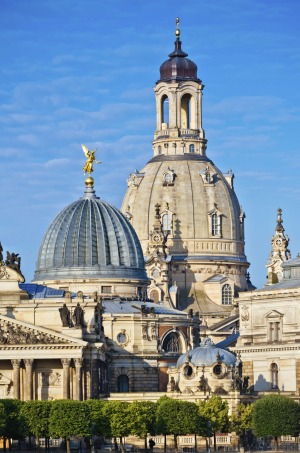
I'd stopped here to break up a trip between Prague and Berlin. As my train crossed the bridge over the Elbe River, my eyes drawn to a feast of towering baroque domes and spires and a spread of lush, green, waterfront meadows, it was easy to see how Dresden, the capital of the state of Saxony, had earned the nickname, the Florence of the Elbe – and why it had so enchanted the 18th-century Venetian landscape painter Canaletto.
Dresden's photogenic quality is all the more impressive considering 80 per cent of its historic centre was wiped out in an event that provokes controversy to this day. While some historians insist the Allies had every right to fire-bomb the city in February 1945 – it was a key industrial hub and the Nazis had yet to surrender – others decry it as a war crime on a defenceless place and people. Tens of thousands are thought to have perished.
The carnage is graphically detailed in Kurt Vonnegut's cult classic Slaughterhouse Five, which is based on the author's experience as an American prisoner of war in Dresden during the attacks. A peek into one of the city's many bookshops reveals a plethora of books crammed with rubble-strewn images and tragic civilian accounts.
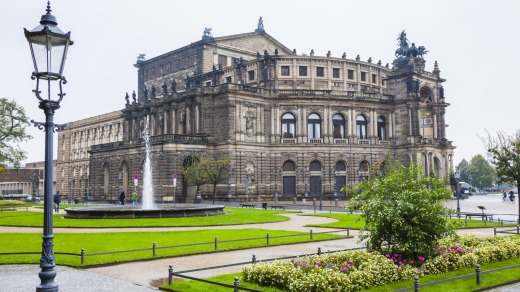
What is undeniable is that Dresden's Altstadt (old town) has been restored with style and panache. A treasure trove of architecture, originally built between the 17th and 19th centuries, many under the the leadership of Saxon monarch Augustus the Strong, there's a reconstructed stunner on seemingly every corner and cobbled square. As horse-drawn carriages clip-clop by, I admire the giant, custard-shaded Frauenkirche, the Protestant cathedral and proud symbol of the city's renaissance.
During the GDR (German Democratic Republic) era, it lay in ruins, a vivid reminder of war and destruction. However, following Germany's reunification, it was rebuilt, funded by donations from across the world. Original material that could be salvaged was blended with new sandstone and the cross on the church's cupola was designed by an English goldsmith whose father was on one of the fateful RAF bombing missions.
Most of Dresden's gorgeous buildings aren't just pretty to look at. The flamboyant Semper Opera House, which hosted premieres of operas by Richard Wagner and Richard Strauss, hosts a range of high-quality concerts, ballets and galas beneath its gaudily frescoed interior.
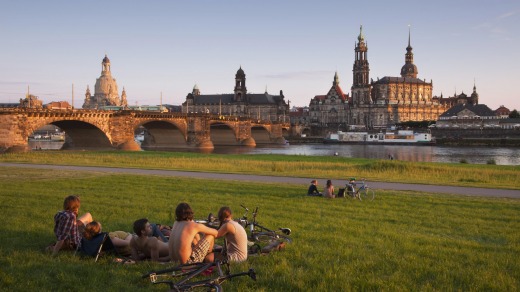
The neighbouring Zwinger, a complex of baroque palaces, courtyards, manicured lawns and fountains, has galleries stuffed with Renaissance art masterpieces, including Raphael's Sistine Madonna, Giorgione's Sleeping Venus, as well as Canaletto's Dresden classics.
Close by, on Bruhl's Terrace, alongside fancy alfresco cafes and restaurants, the newly renovated Albertinum museum stocks a striking collection of 19th and 20th-century European paintings, a highlight being a display juxtaposing West and East German art.
From the terrace, I watch families and couples lazing on the Elbe's grassy banks as a vintage paddle steamer chugs along the river. It's heading to the vineyard-studded outskirts of Dresden and Schloss Pillnitz, a summer palace with Oriental flourishes and pretty gardens.
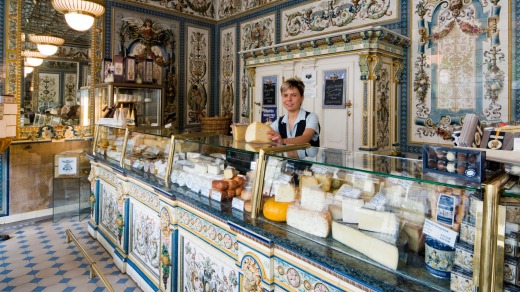
Other day-tripping possibilities include Meissen, a medieval town renowned for its porcelain production (souvenir shops aplenty), and the lake-side castle of Moritzburg, which can be reached by an old steam train.
Visitors shouldn't leave Dresden, however, without exploring the northern side of the Elbe. Whereas the Altstadt teems with refined sights, expensive eateries and tourist groups, the Neustadt is like another city.
Built mostly in the 18th century, it escaped much of the war-time damage wrought on its older sibling and, with its colourful street graffiti, bohemian-tinged bars, beer gardens, bagel shops, indie cafes, cinemas, record stores, fashion boutiques, modern art galleries, and cosmopolitan foodie spots, it offers an earthy contrast to the perfection on the Elbe's southern banks.
"Down there, that's the evil side of Dresden – a tourist trap," jokes Silke, a student I get chatting to in Cafe Combo, one of the retro-chic caffeine dens on the Neustadt's Louisenstrasse.
"I only ever go to the Altstadt when my parents come to visit and want to do some sightseeing. The Neustadt is much more fun."
Neustadt's highlights include Ostpol! (Konigsbrucker Strasse 47), which tries to revive the feeling of the GDR, with Soviet-era furniture and decor, live music and cheap beer, Pfunds Molkerei (Bautzner Strasse 79), a 19th-century milk shop, deli and cafe with luridly painted porcelain tiles, and Lebowski Bar (Gorlitzer Strasse 5), a tiny drinking spot themed after the movie The Big Lebowski. Close by, jazz and blues fans will enjoy the stylish Blue Note (Gorlitzer Strasse 2b), while cocktail lovers will feel at home in Bla Bla Cafe (Louisenstrasse 24), which sells 65 different varieties for just €3.65 a pop ($4.65).
If you're dying for a fried breakfast, cream tea or English language books, check out England, England (Martin-Luther-Strasse 25), a snug haven for Dresden's Anglophiles.
Further north, you'll find the Dresden Military History Museum, recently reopened after extensive renovations, designed by Jewish American architect Daniel Libeskind. A modern section of glass, concrete and steel juts out of the neo-classical building, which houses over a million exhibits and provocatively addresses the causes and consequences of war and violence.
It's possible to tour Dresden in a Trabant, that icon of Communist East Germany (trabi-safari.de), but I find a combination of walking and public transport the best way to traverse the city.
From the Neustadt, I tram it back over the Elbe, stroll down the modern shopping stretch of Prager Strasse (home to some weird cubist architecture), and delve into Grosser Garten, a baroque playground of lakes, parkland and (concrete and soil) trails peopled by strollers, joggers and roller-skaters. There's also a narrow-gauge miniature railway.
Much of this green lung – initially a royal hunting ground for Saxon princes and kings – was also struck by the Allied bombers, though you'd never believe it now.
Already pleased that I'd come to Dresden – it was an impromptu last-minute inclusion on the itinerary – the icing on the cake arrives when I hear those angelic voices floating from the forest.
MORE INFORMATION
dresden.de
GETTING THERE
Lufthansa flies from Sydney to Dresden via Singapore and Frankfurt. See lufthansa.com
Direct trains go to Dresden from Berlin and Prague every two hours (journey time just over two hours); bahn.de
STAYING THERE
Doubles at Altstadt's five-star Hotel Taschenbergpalais Kempinski, set in a rococo palace, built by Augustus the Strong, and restored after World War II damage, are priced from €143 ($182); kempinski.com/de/dresden